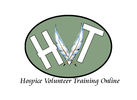New end-of-life program inspires STC nursing students
2010-09-23 23:46:28
WESLACO — Six South Texas College nursing students pondered how they would prepare for the possibility of their own imminent deaths, sitting just doors away from four patients facing that very situation.
It was no surprise the exercise drew tears in the quiet room, said Naila Rodriguez, one of the students in a new end-of-life care program at STC.
The nursing group spent their entire Tuesday at Aurora House, a Weslaco-based specialty care center for patients with a handful of months left to live.
"Imagine saying goodbye to your kids — your everything," Rodriguez said. "What goes through your head as death comes in a few months? What do you tell your family? This gives us patience when a patient is impossible and we don’t know why."
Partnered with Aurora House, STC recently adopted a new pilot program this semester to teach soon-to-be nurses a four-pronged palliative care approach to hospice and end-of-life treatment. The program is the first of its kind in the Rio Grande Valley.
"Physicians can’t move on and just fix the physical pain," said program director Dr. Raphael Rodriguez. "There’s still spiritual, psychological and social pains that can make a patient’s experience worse."
After drafting the program, Dr. Rodriguez persuaded the college to send six fourth-semester students to the care center each week.
There, a chaplain, social worker and doctor teach them how to help dying patients overcome mental, spiritual and emotional distress.
Palliative care has grown in popularity around the country as nurses more frequently act as intermediaries between overworked doctors and worried patients and families.
The American Association of Colleges of Nursing emphasized the need for better end-of-life care in 1997, and Chelan Williams, a nursing instructor at STC, said the Valley is finally catching up.
"The philosophy is not to prolong suffering or hasten death," Williams said. "The Valley is still years behind in the entire medical field.
Dr. Rodriguez hopes to instill that individual-based approach in the students rotating through Aurora House. The facility sees six new students each week but exhaustively explains the overwhelming list of non-physical symptoms that often tax patients’ well-being.
On Tuesday, the students listened intently to a Knapp Medical Center chaplain as he discussed the communication barriers nurses can dissolve by staying aware of the patient’s belief in prayer, differences in relatives’ religions or worry of the afterlife.
Afterward, Naila Rodriguez and her peers began evaluations on a younger male patient.
Though the students asked if he would like to be moved or made more comfortable, he admitted he would not mind passing away soon.
"Every patient — not just those that know they’re dying — can hurt more than pain," Naila Rodriguez said. "We can use these lessons for any type of patient. Hospitals or long-term care do not have to be so sad or scary."
Neal Morton covers education and general assignments for The Monitor. He can be reached at (956)683-4472.
Wednesday, September 29, 2010
Print Article: New end-of-life program inspires STC nursing students
via themonitor.com
Tuesday, September 28, 2010
Hospice Competitors - Something is Missing
Many would be surprised at the competitive nature of the hospice industry. Agencies want a high census of patients fitting into a neat package of 6 months or less of life and cost effective care that makes the patient comfortable and the families as well.
When I started marketing hospice 7 years ago, I remember learning everything I could and would still find myself lacking confidence talking to doctors and nurses about referring to hospice. I found the same old tricks used by other marketers being used by hospice marketers. For example,
Subscribe to:
Comments (Atom)




